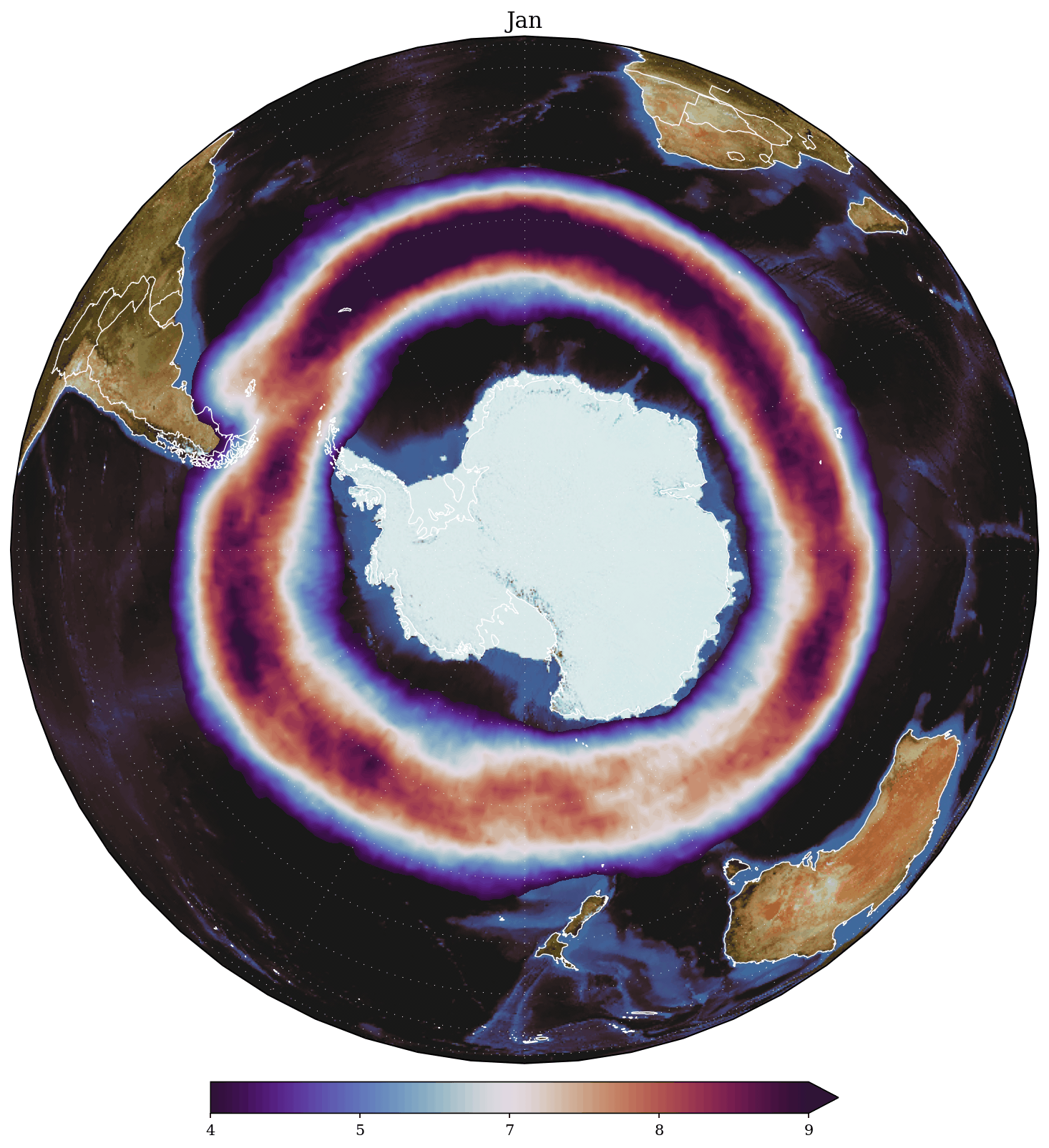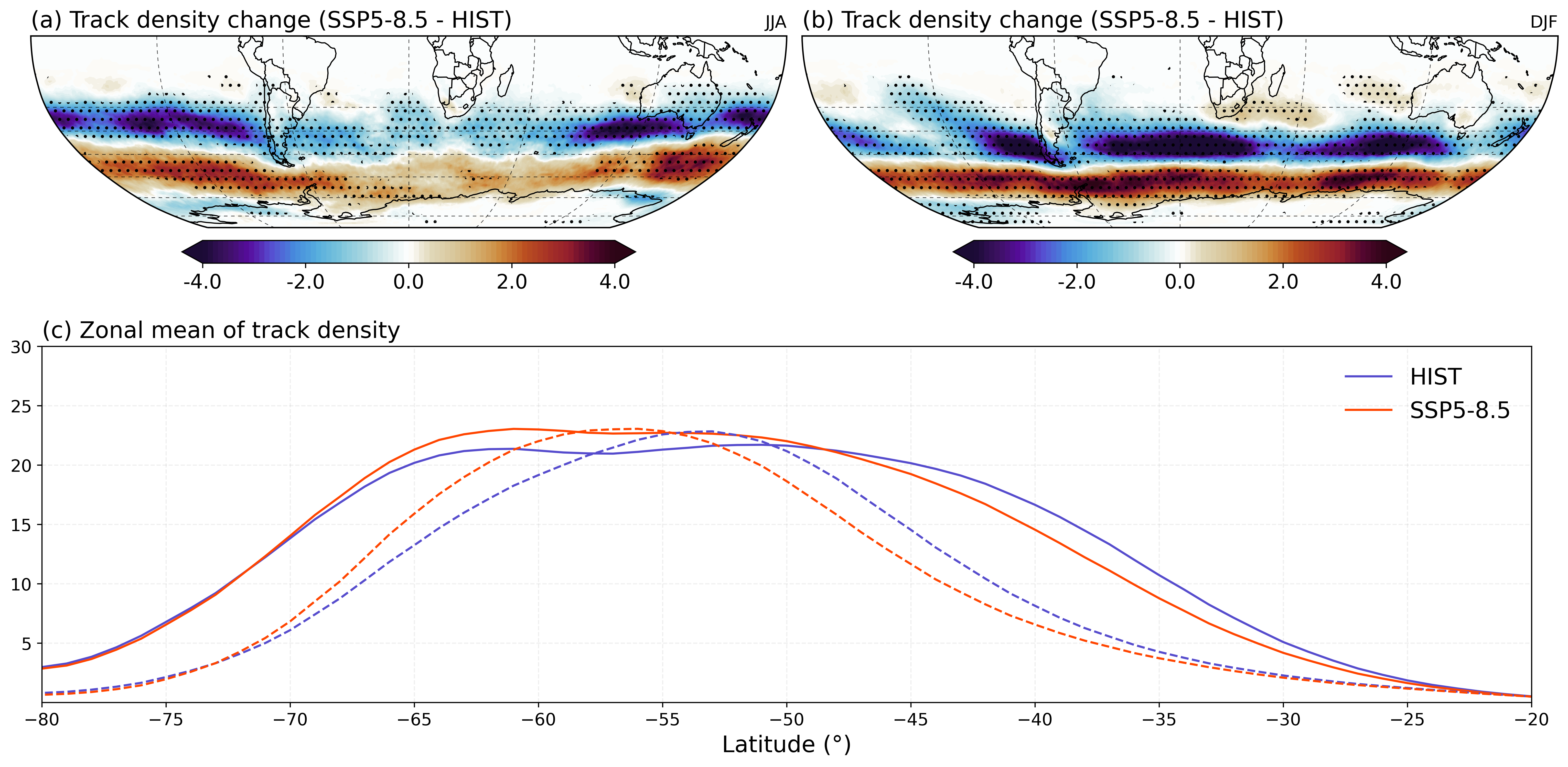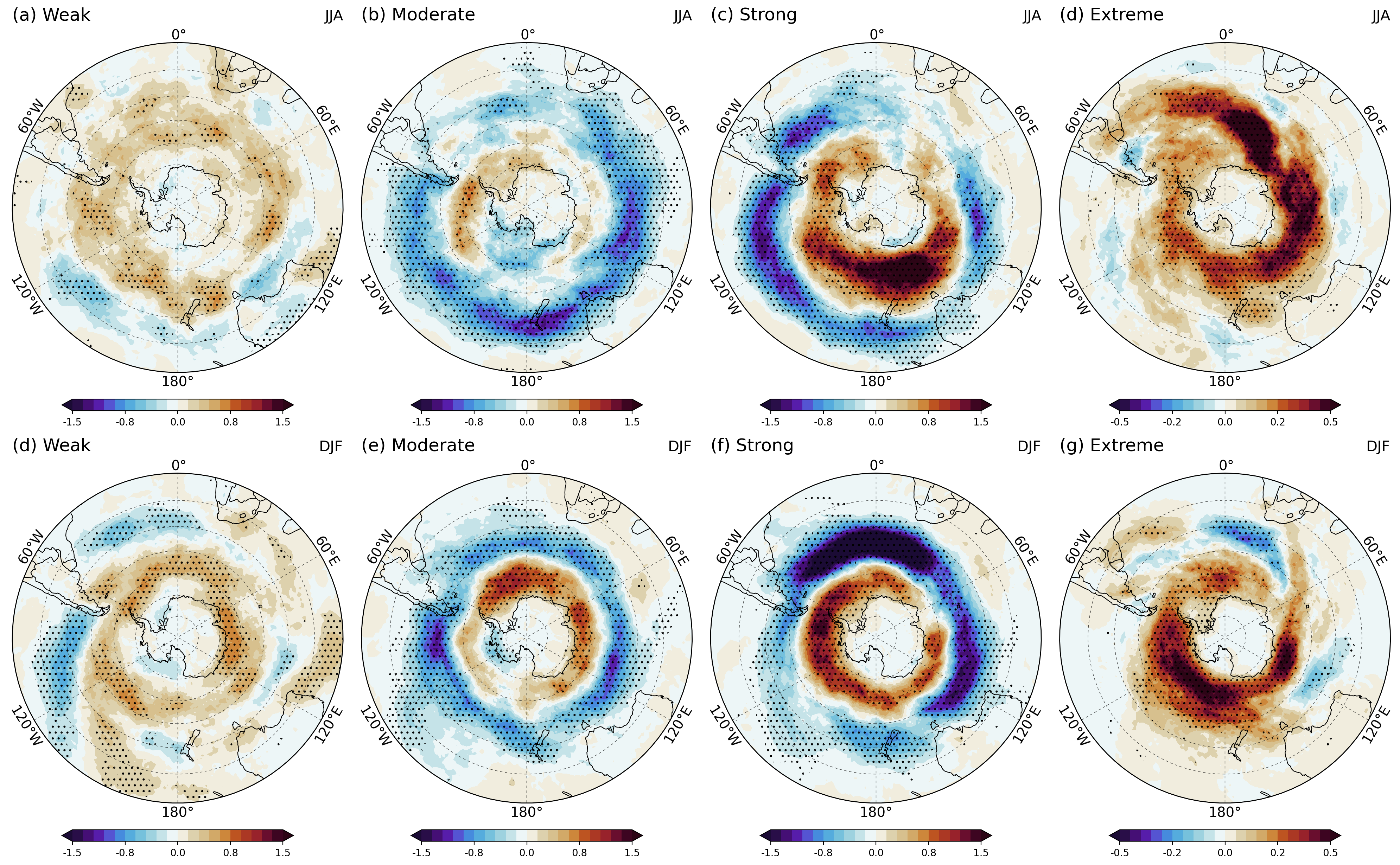Extratropical cyclones play a critical role in distributing heat, moisture, and momentum across different regions of the planet. They are the main atmospheric systems driving weather patterns between the subtropics and high latitudes. For people living in these areas, the experienced changes in temperature, humidity, and weather conditions like rain, snow, wind gusts, and coastal storm surges are frequently influenced, directly or indirectly, by the passage of extratropical cyclones and their associated fronts. Therefore, it is natural to ask some questions:
- Will climate change impact these systems’ frequency and current distribution?
- If so, at what magnitude can we expect these changes to occur?

The animation above shows the current monthly climatological mean of the track density (number of cyclone tracks per 5° spherical cap per month) for the Southern Hemisphere.
It is very interesting how the distribution of tracks evolves into a distinct ring-like pattern around Antarctica during summer.
In this research, which is part of my Ph.D. dissertation, we aim to provide some insights into these questions. By applying an automatic method for tracking extratropical cyclones across the Southern Hemisphere and using data from a ensemble of CMIP6 models and the ERA5 reanalysis, we show that there is a significant projection of a migration of the cyclones tracks towards higher latitudes in both winter and summer seasons (Fig. 1a,b), but this change is more clear and robust for the summer (Fig. 1c).
 Figure 1. (a,b) CMIP6’s projected changes for track density under SSP5-8.5 scenario and (c) the zonal means of the track density for present (HIST) and future (SSP5-8.5) climate in winter (solid lines) and summer (dashed lines) seasons. Black stippling indicates statistically significant changes at the 95% confidence level.
Figure 1. (a,b) CMIP6’s projected changes for track density under SSP5-8.5 scenario and (c) the zonal means of the track density for present (HIST) and future (SSP5-8.5) climate in winter (solid lines) and summer (dashed lines) seasons. Black stippling indicates statistically significant changes at the 95% confidence level.
However, the behavior and intensity of extratropical cyclones exhibit significant variability, making it essential to evaluate how these different groups of cyclones respond to climate change. This study uses the relative vorticity at 850 hPa as a metric of cyclone intensity and suggests that moderate and strong cyclones are the ones that most contribute to the reduction in track density over the subtropical and mid-latitude regions in the SH (Fig. 2b,c,e,f). Additionally, an significant increase in the frequency of extreme cyclones (98th percentile) around Antarctica is also expected (Fig. 2d,g).
 Figure 2. CMIP6’s projected changes for track density by intensity category for (a,b,c,d) winter and (d,e,f,g) summer. Black stippling indicates statistically significant changes at the 95% confidence level.
Figure 2. CMIP6’s projected changes for track density by intensity category for (a,b,c,d) winter and (d,e,f,g) summer. Black stippling indicates statistically significant changes at the 95% confidence level.
Many other results and discussions can be found in my dissertation and will soon be published as a paper.
Souza, M. R., Piva, E. D., Nascimento, E. L., Gan, M. A., Anabor, V., Gozzo, L. F. Southern Hemisphere extratropical cyclones in a warming climate: climatology, characteristics and future changes. International Journal of Climatology (in preparation). 2024.
Souza, M. R. “Extratropical cyclones and associated precipitation in Southern Hemisphere: present and future climate.” Ph.D. diss., Federal University of Santa Maria, 2023. https://repositorio.ufsm.br/handle/1/31129
Reboita, M. S., Rocha, R. P., Souza, M. R., and Llopart, M. Extratropical cyclones
over the southwestern South Atlantic Ocean: HadGEM2‐ES and RegCM4
projections. International Journal of Climatology, v. 38, p. 2866-287, 2018. DOI: https://doi.org/10.1002/joc.5468
Reboita, M. S., Souza, M. R., and Rocha, R. P. Extratropical cyclones over southwestern Atlantic Ocean: present and future climates projected by RegCM4. In: EGU General Assembly, 2017, Viena. EGU General Assembly, 2017.

 Figure 1. (a,b) CMIP6’s projected changes for track density under SSP5-8.5 scenario and (c) the zonal means of the track density for present (HIST) and future (SSP5-8.5) climate in winter (solid lines) and summer (dashed lines) seasons. Black stippling indicates statistically significant changes at the 95% confidence level.
Figure 1. (a,b) CMIP6’s projected changes for track density under SSP5-8.5 scenario and (c) the zonal means of the track density for present (HIST) and future (SSP5-8.5) climate in winter (solid lines) and summer (dashed lines) seasons. Black stippling indicates statistically significant changes at the 95% confidence level. Figure 2. CMIP6’s projected changes for track density by intensity category for (a,b,c,d) winter and (d,e,f,g) summer. Black stippling indicates statistically significant changes at the 95% confidence level.
Figure 2. CMIP6’s projected changes for track density by intensity category for (a,b,c,d) winter and (d,e,f,g) summer. Black stippling indicates statistically significant changes at the 95% confidence level.